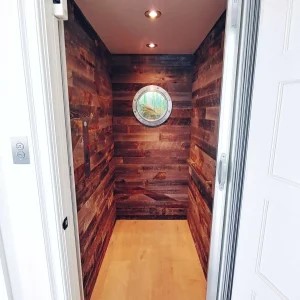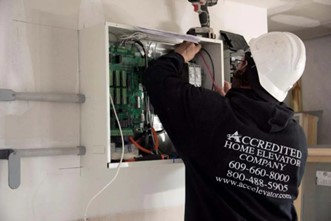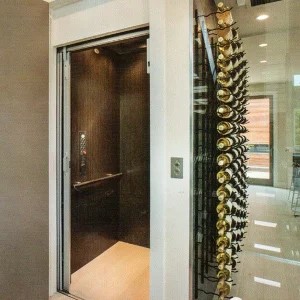In real estate, luxury and functionality are no longer exclusive to grand estates. More homeowners are seeking ways to enhance accessibility, convenience, and forward-thinking design in their properties. Residential elevators, increasingly offered by elevator companies in Florida, are becoming a popular addition to homes at various price points. These installations provide a perfect blend of utility and elegance. For builders and architects, incorporating lift systems into home designs is a strategic, forward-thinking choice that adds significant value and appeals to a wider range of buyers.
This article delves into the benefits of residential elevators, their impact on home value, and why architects and builders should consider making them a standard feature in modern home construction.
The Growing Demand for Residential Elevators
The idea of an in-home lift system was once associated with luxury mansions and the ultra-wealthy. However, as technology has advanced, residential elevators have become more affordable, compact, and customizable, making them an attractive option for a wider audience.
Several factors contribute to the growing demand:
Aging in Place: With an aging population, many homeowners prioritize staying in their homes as they grow older. Lift systems provide accessibility for seniors or individuals with mobility challenges, eliminating the need to downsize or relocate to a single-story home.
Multi-Generational Living: As more families embrace multi-generational living, having an elevator ensures that the home is accessible to people of all ages and abilities, enhancing overall comfort. The 2020 Census reported 6 million multigenerational households, an increase from 5.1 million in 2010.
Convenience and Efficiency: Moving between floors becomes effortless with a residential elevator, whether it’s for transporting groceries, heavy items, or laundry. This convenience appeals to buyers of all demographics.
Luxury Appeal: Lift systems are increasingly seen as a modern amenity that elevates a home’s style and sophistication. For homebuyers looking for unique features, an elevator can be a significant selling point.
Adding Value to Residential Properties
From a builder’s or architect’s perspective, incorporating a residential lift into home designs can significantly increase property value. Here’s how:
Enhanced Marketability
Buyers view this feature as both a luxury and a practical investment for the future. Properties with elevators often attract buyers from a broader demographic, including families with elderly members or individuals planning for long-term accessibility.
A home lift not only makes the property more appealing but also positions it as a forward-thinking design that caters to modern lifestyles. This can result in faster sales and even higher offers.
Increased Appraisal Value
Lift systems are a high-impact upgrade that appraisers recognize as adding tangible value. Unlike other luxury additions, such as a pool or a wine cellar, elevators combine practicality with aesthetic appeal. This dual benefit often translates to a higher appraisal value for the property.
Future-Proofing Homes
As more homebuyers prioritize long-term livability, residential lifts make properties more adaptable. Futureproofing is particularly important in today’s market, where buyers are thinking about aging in place or accommodating diverse family needs. A home equipped with an elevator is prepared for these scenarios, making it a standout choice for forward-thinking buyers.
Premium Features Demand Premium Pricing
Luxury amenities allow builders to position homes at the higher end of the market. Buyers willing to invest in premium features often see the added value and are willing to pay more for convenience and accessibility.
Benefits for Homebuyers

Improved Accessibility
Multilevel home lifts remove barriers for people with mobility challenges, ensuring every floor is accessible. This is a game-changer for families with elderly relatives, young children, or anyone recovering from an injury. With accessibility becoming an increasing priority, homes with these features cater to a growing segment of the population.
Convenience and Practicality
Carrying heavy loads up and down stairs can be inconvenient—and even dangerous. Residential elevators simplify daily tasks like moving groceries, furniture, or luggage. For busy families or individuals, this convenience enhances the overall quality of life.
Aesthetic and Customization Options
From sleek glass designs to wood-paneled interiors, elevators can be customized to complement a home’s architectural style. Builders can work with manufacturers to design elevators that integrate seamlessly into the home’s layout, adding a touch of sophistication.
Safety and Peace of Mind
Modern residential lifts are equipped with advanced safety features, including emergency stop buttons, battery backup systems, and door sensors. These features ensure safe operation, even during power outages or emergencies. For families with children or seniors, these safety measures offer peace of mind.
Key Considerations for Builders and Architects
The decision to include residential elevators in new homes involves several important considerations:

Space Planning
Modern residential elevators come in a range of sizes and configurations, including compact models that can fit in tight spaces. Architects should plan for a shaft in the initial design phase to ensure optimal placement without compromising other aspects of the home layout.
Energy Efficiency
Today’s elevators are more energy-efficient than ever, using systems such as hydraulic, pneumatic, or traction drives that consume minimal electricity. Highlighting energy efficiency can make the elevator even more appealing to environmentally conscious buyers.
Cost vs. Value
The cost of installing these features has decreased over the years, thanks to technological advancements and streamlined installation processes. Builders should weigh the initial installation cost against the added property value and marketability.
Customization and Integration
Architects and designers have the opportunity to incorporate elevators as an integral part of the home’s design. Customizable materials, colors, and finishes allow these amenities to blend seamlessly into the home’s style or serve as a design focal point.
Upgrading Existing Homes
When working on renovations or retrofits, adding a residential lift can be a strategic way to modernize an older property. Retrofit designs are meant to fit into existing spaces without requiring extensive structural changes. These systems are ideal for homeowners looking to upgrade their property and add value without major renovations.
Marketing Residential Elevators to Homebuyers
Builders and architects can effectively market homes with residential elevators by highlighting the following benefits:
Future-Ready Living: Showcase how an elevator future-proofs the home for long-term use, catering to aging homeowners or multi-generational families.
Luxury Appeal: Emphasize the sophistication and convenience that these features bring, framing them as a premium feature that sets the home apart.
Energy Efficiency: Highlight the eco-friendly and low-energy consumption of modern systems, appealing to environmentally conscious buyers.
Practical Benefits: Focus on the convenience and safety advantages, such as easy transportation of heavy items and enhanced accessibility.
Conclusion
Residential elevators are no longer just a luxury—they are a practical, versatile, and value-adding feature that appeals to a wide range of buyers. For builders and architects, incorporating elevators into home designs is a strategic move that enhances marketability, increases property value, and aligns with modern lifestyle trends.
As the demand for convenience, accessibility, and futureproofing continues to grow, residential elevators are poised to become a standard feature in modern homes. By integrating this amenity into your projects, you can deliver homes that not only meet today’s expectations but also exceed them—offering long-term value for buyers and a competitive edge in the market.









